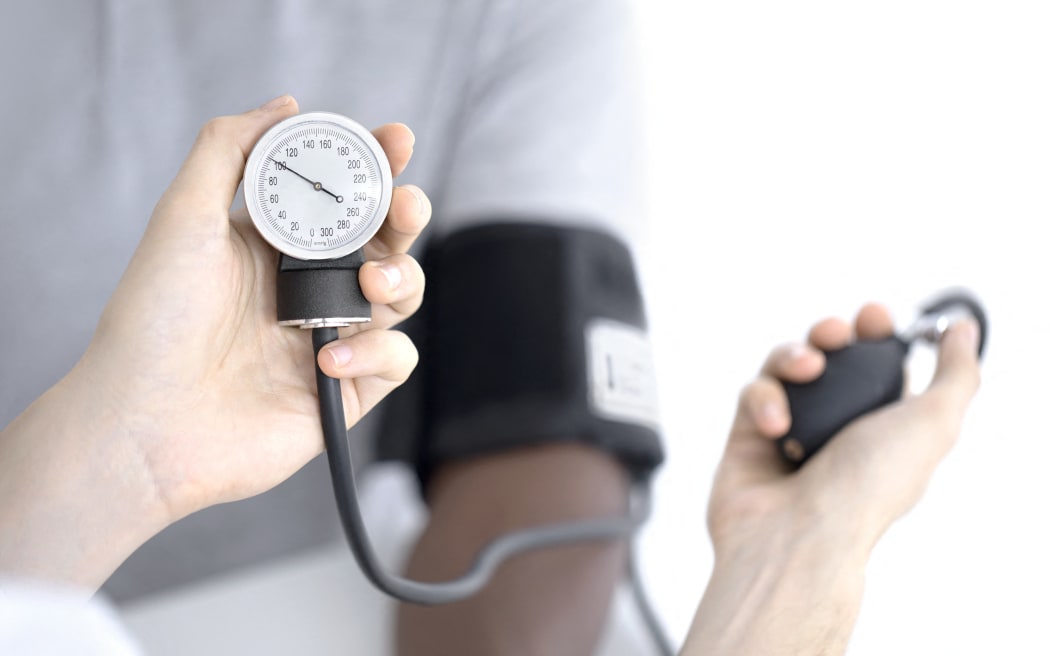According to the Stroke Foundation one in five New Zealanders has high blood pressure, putting them at increased risk of strokes and other conditions.
Smoking, obesity and poor diet can all raise your blood pressure - but you don’t need to exercise to excess to get it down.
According to research published in the British Journal of Sports Medicine, isometric exercises like wall squats can tackle it more effectively than other forms of exercise – including weight training, high-intensity intervals (HIIT), and simple aerobic movements.

Photo: SCIENCE PHOTO LIBRARY
One of the study’s authors is Jonathan Wiles. He told Sunday Morning that isometric exercise is activity that generates tension in the muscle without changing its length.
In everyday life this might be carrying two heavy shopping bags at arms length; at the gym it would be wall squats, or wall sitting.
So why are wall squats so effective?
In isometric exercises, there is a constant force in the muscle that restricts blood flow and oxygen delivery over a sustained period of time, Dr Wiles says.
“We normally perform two-minute bouts of isometric exercise. So … as the muscle oxygen-levels drop, our brain desperately tries to send more blood to the muscle to stop it fatiguing.
“However, the blood delivery is obstructed like water trying to flow through a flattened hose pipe. So as soon as the isometric exercise or the isometric contraction ends, not only is the restriction released … but our bodies are very clever and the blood vessels actively widen, allowing a big rush of blood to the area that's been exercising to help it recover.
“And since we've only got a certain amount of blood in our bodies, suddenly sending more of it to a large area like the legs - in the case of the wall squat - causes a transient [short-term] drop in our blood pressure.”
When that sequence is repeated regularly, it's thought to be the best way to achieve long-term blood pressure reduction, he said.
The research stemmed from observations of people whose jobs had a high isometric component but were less likely to have high blood pressure.
To benefit from squats, you didn’t need to be leaning at a 90-degree angle either, he says.
“What we recommend is that people just lean in against the wall in an upright position and then … if people just squat halfway between being upright and 90 degrees - approximately 135 degrees - and [then] drop just enough to make it uncomfortable.
"Probably about 2cm more - and it's that little 2cm extra drop - the halfway plus - that makes the difference and gets you about the right height.”
Wall squats or similar exercises could have benefits for people who couldn’t – or wouldn’t – do the recommended 150 minutes of moderate aerobic activity each week, he said.
“It’s 24 minutes of exercise a week in total… I think you can appreciate there's a huge difference between those two amounts of time investment.
“So when we've looked at unmedicated, pre-hypertensive – that’s those people who are heading towards having clinically high blood pressure - we've seen reductions of 12mm of mercury systolic and 6mm of mercury diastolic following about four weeks of training.”
Such activity was arguably better than blood pressure drugs, but without the potential side effects. You don’t even need special gear or clothing for squats, he added.
“All you need is a stable wall with a bit of space, enough to fit your back against it, and then basically you need a non-slip floor or non-slip shoes and nothing else other than that to be able to perform a squat.”

